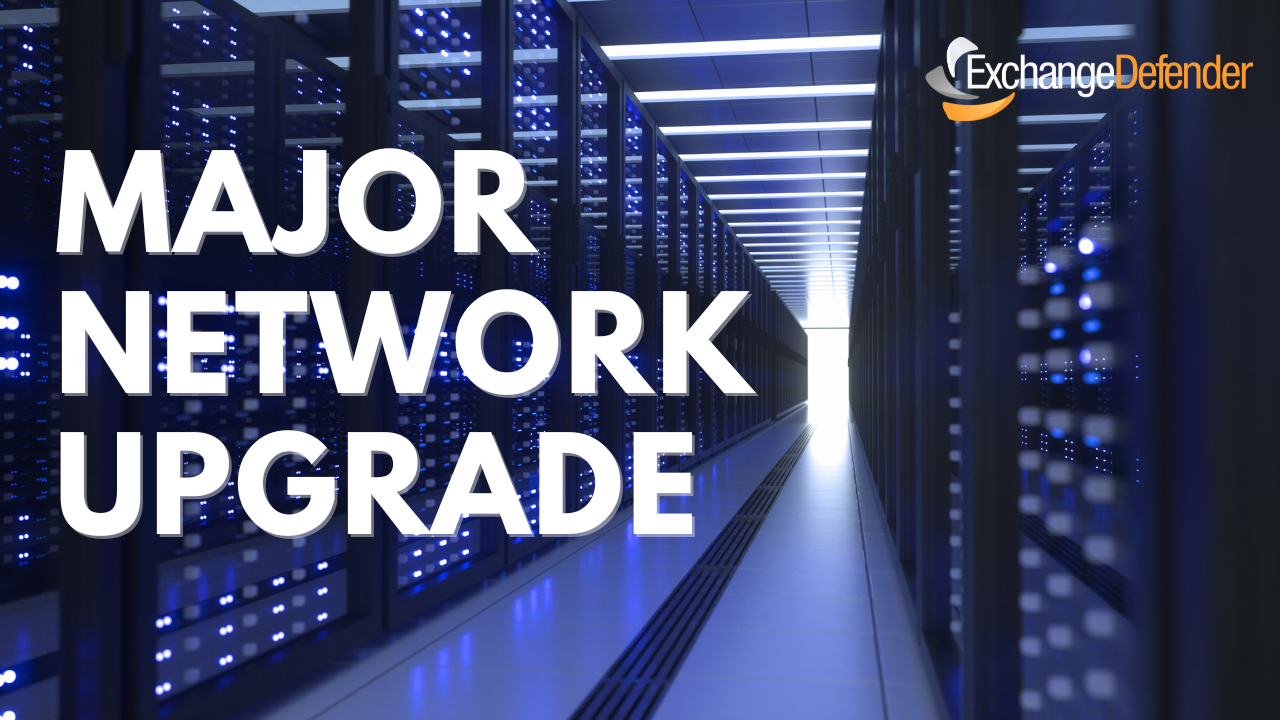Answering With The Cloud
 Every new wave of technological advancement brings nuances that make it difficult to make the exact comparison to the problems old technology solved. The easiest way to promote the new stuff is to talk about all the new great things it does, but what do you say when you are questioned about things that are no longer a problem in the 21st century?
Every new wave of technological advancement brings nuances that make it difficult to make the exact comparison to the problems old technology solved. The easiest way to promote the new stuff is to talk about all the new great things it does, but what do you say when you are questioned about things that are no longer a problem in the 21st century?
One of the questions we are usually asked is if a company has enough bandwidth to rely on Hosted Exchange.
Fair question. When the small company first started it’s Exchange deployment in late 90’s early 00’s it had all it’s employees in one site and every desktop was on the LAN. Fast forward to 2013 where most employees have mobile phones that are in constant sync with the Exchange deployment over the WAN. Remote offices, road warriors, executive laptops at home – now each user has several devices connecting to the Exchange server at the office and there would be actual net savings in bandwidth if the Exchange server went to the cloud!
To be fair, these “infrastructure concerns” are typically coming from the IT employee who is trying to protect his job with inferior solutions: Your sales process should focus on actual business operations concerns around business continuity, security and compliance. Here are some ways to differentiate the cloud model with the DIY model.
Just how reliable is the cloud version? What happens when it goes down?
Well it uses the same software that you would run in your office so it is comparable to your existing experience. The difference with the cloud is that the systems are much larger and far more redundant so they can conduct more maintenance without affecting operations because it’s not a single server. Maintenance keeps small problems from becoming big problems and when there are issues they are posted here so you know exactly what is going on.
Cloud Exchange is also redundant across two data centers so if there is a networking issue that impacts one you will still be in business.
In the event of a catastrophic outage, where your cloud Exchange is actually down, you can rely on ExchangeDefender LiveArchive which gives you last year worth of email including all your contacts, calendars and appointments with full realtime access to send and receive even over a mobile device.
What about backups? What if they go out of business? How can I be sure I have my data?
You’re protected in several ways, the most immediate one being Outlook 2013 cached mode. Because Outlook 2013 is included for free we will upgrade all your workstations to store all your email locally on your workstations or laptops so it will be protected by the local backups first.
We also provide business level backups of your entire organization and we can do it on a monthly, quarterly or annual basis so you can snapshot your mail and keep it here or off site in a safe deposit box on a portable USB hard drive. We can even automate the process by keeping this information on BDR systems in our data center.
There is also an option for Compliance Archiving – we can store up to 10 years of email and have it available for immediate search without additional devices or appliances. It’s just another service available to protect your data.
To be honest, the concept of backups worked in the old days where organizations had small servers or single instance storage with a single RAID – cloud deployments are scalable, using multiple servers with DAG that keeps copies of the data in multiple locations. Because these systems are built for scale they offer more flexibility and more data copies – but we can certainly help you sleep easier at night by providing these additional services that make sense if you’re not so sure about the cloud.
What about security? I hear the cloud is hacked a lot! I have compliance to worry about as well.
The threat of having your security compromised is real regardless of where your Exchange is. One thing you can be sure of is that providing the level of monitoring and security layers available in the cloud would make an office server solution very expensive. ExchangeDefender provides stated Security Procedures document, Data Destruction Document, is SSAE 16 certified and undergoes multiple security audits every year – how about your IT employee?
We already mentioned Compliance Archiving, the system that gives you realtime access to 10 years of your email, where you can quickly locate any inbound, outbound and even interoffice email that matches search criteria. If you have HIPAA concerns, ExchangeDefender will sign a Business Associate Agreement (BAA) so you’re covered and have full access to your mail without worrying if it has been tampered with by the IT staff.
Security is really a matter of monitoring, technology and user awareness. ExchangeDefender has a lot more resources and higher end firewalls and DDoS protection service to address security problems when they pop up, patch the systems quickly because it can offline redundant servers, filter suspicious traffic and more that we cannot do affordably for you in the office. But what we can do is implement requirements for password rotation, we can deploy RSA SecurID for one-time passwords, we can monitor usage patterns and more.
Summary
Sometimes it’s hard for people stuck in the old model of IT to quickly accept how change has provided for better solutions to old IT problems. The key to a successful client relationship and a sale is not to argue some preconceived notions about IT but to explain the advances in technology and all the better stuff they will get from the cloud.
While everything about technology can be debated endlessly by the tech world, technical implementation to suit business has been taken out of the clutches of IT departments and placed into control of executives who have a more practical view of technology. Try asking two IT people: “What’s the best way to backup data” and see how many answers you get. Asking an executive will get you a different, more practical answer: We need to be able to continue work as usual within X hours but we need to have access to Y years of data in case of an audit.
ExchangeDefender and our partners are constantly evolving the best technology and the best local people around the world to solve these IT problems. Sometimes starting the conversation and framing it in a way to explain the advancement we’ve had in the past two decades when it comes to email is more difficult than just providing the solution. We hope this helps and if you need more info please do not hesitate to contact us.
Sincerely,
Vlad Mazek
CEO, ExchangeDefender

